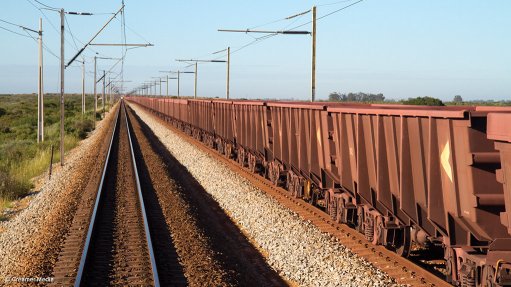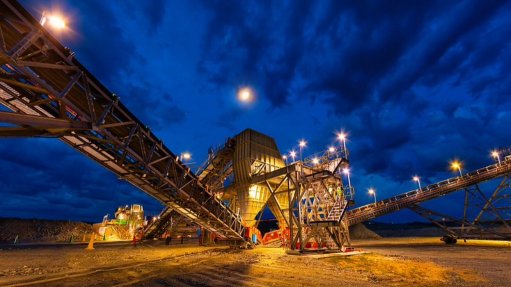New sanitation, wastewater management benchmark tool launched
A new tool to benchmark and accelerate Africa’s progress towards the Sustainable Development Goals (SDG) on safe sanitation and wastewater management has been launched.
The inaugural Sanitation and Wastewater Atlas of Africa is the culmination of four years of collaboration between the African Development Bank, the United Nations Environment Programme (UNEP) and the Norwegian nonprofit organisation supporting the UNEP, GRID-Arendal.
The atlas, which assesses the progress made and highlights opportunities where investment in sanitation and wastewater management can improve health and spur economic growth, aims to assist policymakers to accelerate change and investment in the sector.
“Africa cannot have a healthy society without adequate access to safe water, sanitation and hygiene,” says African Development Bank agriculture, human and social development acting VP Wambui Gichuri.
The findings of the atlas will allow policymakers to track progress on sanitation and wastewater, making it a valuable tool to accelerate change on the world’s second-driest continent after Australia.
Africa holds only 9% of global renewable water resources, with an average of 3 930 cubic kilometres a year.
While significant efforts are being made across Africa to ensure better access and services, many places still have inadequate infrastructure for sanitation and wastewater management, amid population growth, rapid urbanisation, improving lifestyles and industrial and agricultural expansion.
The atlas shows that nearly 750-million people – 69% of Africa’s population – did not have access to basic sanitation services as at 2017, mostly in sub-Saharan Africa.
In 34 out of 38 sub-Saharan African nations, more than half of the population lacks access to basic handwashing facilities.
“In the past ten years, the African Development Bank has invested more than $6-billion in sanitation and hygiene improvements, but much more financing is needed from the private sector, development finance institutions, governments and other sources,” Gichuri states, adding that the atlas can inform strategic investment going forward.
The Covid-19 pandemic brought into focus the already existing need to upgrade Africa’s water and sanitation infrastructure.
“As the world seeks to recover better after Covid-19, prioritising wastewater and sanitation infrastructure in Africa is critical,” says UNEP marine and freshwater branch head Leticia Carvalho.
The atlas incorporates maps, graphics and profiles of all African countries and includes analyses of their water resources and provision of basic services, and also explores the links between sanitation and wastewater and ecosystem health and human health.
It further discusses frameworks and circular economy approaches that can lead to better infrastructure and systems.
The report further urges African governments to incorporate sanitation and wastewater programmes into their post-Covid-19 strategic planning.
The atlas is also expected to promote the African Union’s Agenda 2063 as well as the Africa Water Vision for 2025.
It recommends investments into the necessary policies, infrastructure and human skills capacities to operationalise actions towards the achievement of goals and targets in the 2030 Agenda, including those for sustainable sanitation and wastewater management.
“SDG 6, which calls for making water and sanitation available to everyone, is within reach by 2030, if we commit the needed resources. The Sanitation and Wastewater Atlas of Africa provides the tools for policymakers to focus on this important challenge,” Carvalho comments.
Comments
Press Office
Announcements
What's On
Subscribe to improve your user experience...
Option 1 (equivalent of R125 a month):
Receive a weekly copy of Creamer Media's Engineering News & Mining Weekly magazine
(print copy for those in South Africa and e-magazine for those outside of South Africa)
Receive daily email newsletters
Access to full search results
Access archive of magazine back copies
Access to Projects in Progress
Access to ONE Research Report of your choice in PDF format
Option 2 (equivalent of R375 a month):
All benefits from Option 1
PLUS
Access to Creamer Media's Research Channel Africa for ALL Research Reports, in PDF format, on various industrial and mining sectors
including Electricity; Water; Energy Transition; Hydrogen; Roads, Rail and Ports; Coal; Gold; Platinum; Battery Metals; etc.
Already a subscriber?
Forgotten your password?
Receive weekly copy of Creamer Media's Engineering News & Mining Weekly magazine (print copy for those in South Africa and e-magazine for those outside of South Africa)
➕
Recieve daily email newsletters
➕
Access to full search results
➕
Access archive of magazine back copies
➕
Access to Projects in Progress
➕
Access to ONE Research Report of your choice in PDF format
RESEARCH CHANNEL AFRICA
R4500 (equivalent of R375 a month)
SUBSCRIBEAll benefits from Option 1
➕
Access to Creamer Media's Research Channel Africa for ALL Research Reports on various industrial and mining sectors, in PDF format, including on:
Electricity
➕
Water
➕
Energy Transition
➕
Hydrogen
➕
Roads, Rail and Ports
➕
Coal
➕
Gold
➕
Platinum
➕
Battery Metals
➕
etc.
Receive all benefits from Option 1 or Option 2 delivered to numerous people at your company
➕
Multiple User names and Passwords for simultaneous log-ins
➕
Intranet integration access to all in your organisation


















